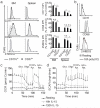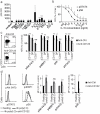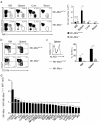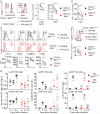The metabolic checkpoint kinase mTOR is essential for IL-15 signaling during the development and activation of NK cells
- PMID: 24973821
- PMCID: PMC4110708
- DOI: 10.1038/ni.2936
The metabolic checkpoint kinase mTOR is essential for IL-15 signaling during the development and activation of NK cells
Abstract
Interleukin 15 (IL-15) controls both the homeostasis and the peripheral activation of natural killer (NK) cells. The molecular basis for this duality of action remains unknown. Here we found that the metabolic checkpoint kinase mTOR was activated and boosted bioenergetic metabolism after exposure of NK cells to high concentrations of IL-15, whereas low doses of IL-15 triggered only phosphorylation of the transcription factor STAT5. mTOR stimulated the growth and nutrient uptake of NK cells and positively fed back on the receptor for IL-15. This process was essential for sustaining NK cell proliferation during development and the acquisition of cytolytic potential during inflammation or viral infection. The mTORC1 inhibitor rapamycin inhibited NK cell cytotoxicity both in mice and humans; this probably contributes to the immunosuppressive activity of this drug in different clinical settings.
Figures







Comment in
-
mTOR: a gate to NK cell maturation and activation.Cell Cycle. 2014;13(21):3315-6. doi: 10.4161/15384101.2014.972919. Cell Cycle. 2014. PMID: 25485573 Free PMC article. No abstract available.
References
-
- Vivier E, Tomasello E, Baratin M, Walzer T, Ugolini S. Functions of natural killer cells. Nat. Immunol. 2008;9:503–510. - PubMed
-
- Spits H, et al. Innate lymphoid cells--a proposal for uniform nomenclature. Nat. Rev. Immunol. 2013;13:145–149. - PubMed
-
- Walzer T, et al. Natural killer cell trafficking in vivo requires a dedicated sphingosine 1-phosphate receptor. Nat. Immunol. 2007;8:1337–1344. - PubMed
-
- Luci C, et al. Influence of the transcription factor RORgammat on the development of NKp46+ cell populations in gut and skin. Nat. Immunol. 2009;10:75–82. - PubMed
Publication types
MeSH terms
Substances
Grants and funding
LinkOut - more resources
Full Text Sources
Other Literature Sources
Molecular Biology Databases
Miscellaneous

